Final summer season, temperatures within the southern Spanish metropolis of Seville hit greater than 40 levels Celsius (104 levels Fahrenheit). The heatwave was so intense it earned itself a reputation: Heatwave Yago, the town’s second named occasion in two years.
Seville, amongst different cities in Europe and around the globe, is dealing with temperatures that it was not constructed to deal with. In the summertime of 2022, excessive warmth melted railway traces and airport tarmac in London, England. In July 2023, Germans began contemplating noon siestas to flee the sweltering warmth.
As temperatures soar, cities accustomed to cooler temperatures are searching for methods to adapt that keep away from counting on energy-intensive options like air con.
A small analysis group in Seville is taking inspiration from historical Center Japanese cultures that discovered to dwell with the warmth earlier than electrical energy may present respite.
Some see their efforts as honouring the knowledge of historical thinkers, whereas others say that these outdated programs are excess of a know-how – they mirror a mindset of sustainability that right now’s world is desperately making an attempt to resurrect.
‘Particular relationship between people and nature’
Majid Labbaf Khaneiki is considered one of a handful of specialists serving to convey 3,000-year-old underground aqueduct know-how, referred to as qanats, to the fashionable world.
Early qanat tunnels, which had been constructed manually with picks and shovels, appeared in China, Oman, the United Arab Emirates and Afghanistan. Nonetheless, students estimate the primary qanat was born within the early first millennium in Persia, after which unfold to arid areas all through the world.
The traditional system is made up of a community of underground canals – 20 to 200 metres beneath the desert’s floor – that transport water from greater altitudes to decrease ones. Constructed on a slight slope, the canals use gravity to move the water. A collection of well-like vertical shafts enable for entry and upkeep.
From above, the system appears to be like like 1000’s of lined-up anthills winding by way of the desert. The true pleasure occurs underground the place the water is collected earlier than it travels by way of the canals.
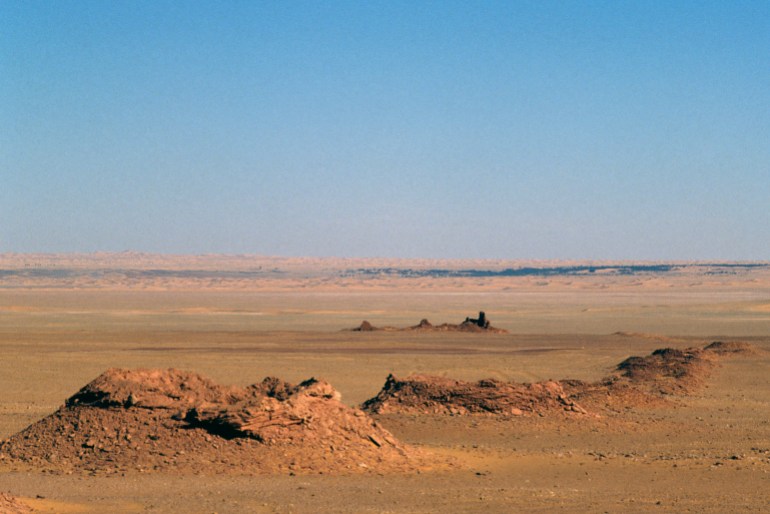
Khaneiki, a 49-year-old professor in archaeohydrology on the College of Nizwa in Oman, has spent his whole profession finding out historical tunnels that carry water beneath the floor of arid and semi-arid environments. He grew up in a home crammed with historical past books and a father with a ardour for archaeology.
Khaneiki’s household hails from a small arid village in Japanese Iran referred to as Kanek – the linguistic root of his final identify. Khaneiki spent some summers there rising up. “The one water that equipped that village was the qanat,” he says, including that it ran immediately by way of the village, permitting it to develop into an oasis of inexperienced in the course of the desert.
“The qanat was really a congregation level for folks. I keep in mind I met different youngsters precisely on the place and we used to play there,” he says. “The qanat system goes hand-in-hand with social interplay. Possibly that’s why I’m so enthusiastic about it, as a result of it’s form of an intrinsic a part of my identification and persona.”
Khaneiki has form eyes, and his conviction in qanats as programs of the longer term — not simply the previous — is emphatic. “My final identify ought to have been qanat builder,” he says with amusing. In the middle of a couple of minutes, he rattles off trendy qanat tasks in Azerbaijan, Spain and Pakistan.
He explains how totally different the method of constructing these qanats is in contrast with the collaborative effort of historical programs. For instance, in Azerbaijan, the federal government constructed a brand new qanat utilizing trendy equipment with a purpose to convey extra jobs and sources to communities exterior the populated cities and assuage inside migration. “This was a really top-down managerial means of doing it,” he says. “Up to now, it was bottom-up”.
“The qanat system will not be solely tunnels within the floor,” Khaneiki says. “It’s a way of life.”
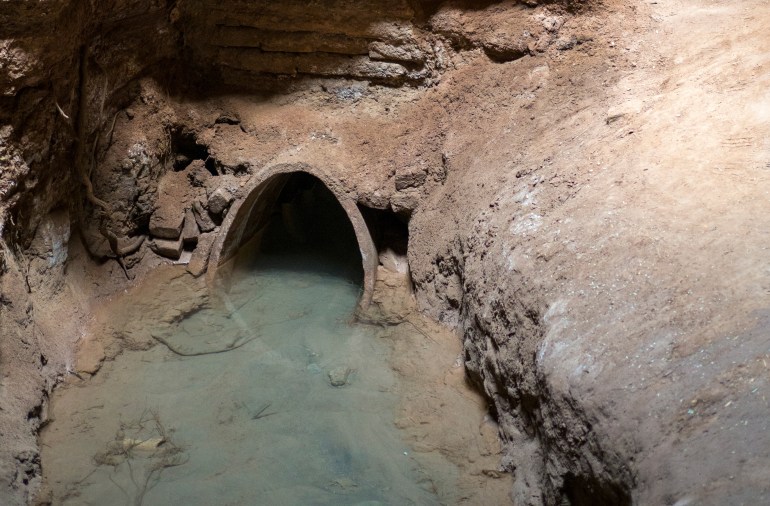
The traditional qanat system enabled irrigation in desert environments, allowed for agriculture to flourish and fostered group cooperation. It’s seen as the premise for decentralised water administration in Iran, and a extra sustainable answer to trendy pumping and dams.
“Qanats are one of many oldest notions of an organization on the planet,” says Negar Sanaan Bensi, a lecturer and researcher within the school of structure on the Delft College of Know-how within the Netherlands. “They’re primarily based on an enormous shareholding system” that requires totally different folks residing in a area to work collectively and use the water sources out there.
It labored equally to how a startup does right now. A few folks got here collectively to begin digging with hand-held instruments for water. As soon as they bought what they wanted, extra folks would be a part of and develop the tunnel, and take their share of the sources. Over time this unfold all through the nation, with every municipality managing their native qanat. “They began with 4 or 5 folks,” says Khaneiki. “However ultimately they’d a whole bunch of individuals cooperating.”
Khaneiki is now taking a look at how qanats are getting used for brand spanking new functions and new varieties – not for irrigation and cultivation, however for tourism and architectural functions, he says, pointing to their conventional design and cultural significance, and the designation of some qanats as UNESCO tourism websites. China, which has 800 qanat programs, has constructed a museum explaining the historical past and engineering of the totally different programs. There are additionally statues of qanat builders digging tunnels with a pickaxe or gathering soil.
“They [qanats] are additionally coming again to life for the needs of local weather change,” Khaneiki says.
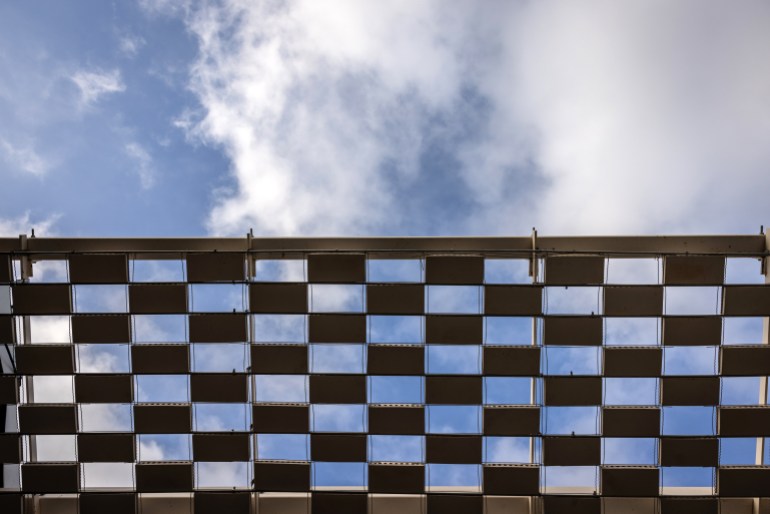
How the outdated is being made new
1000’s of kilometres away from the arid areas of the Center East, and even farther away from China, scientists Jose Sanchez Ramos and Servando Alvarez are utilizing the idea of qanats to supply an oasis within the metropolis of Seville.
As a part of a metropolis initiative to seek out options to rising temperatures, Ramos and Alvarez got the chance to decide on a location to experiment with bringing down temperatures in an out of doors area with out counting on energy-intensive applied sciences.
A type of choices was on La Isla de La Cartuja, an space northwest of the centre of Seville. The neighbourhood was as soon as the placement of the 1992 Seville Exposition, which drew 41 million guests. Though the town has made some makes an attempt to urbanise the area, as of late it appears to be like largely deserted, with overgrown shrubbery, cracked sidewalks and a decrepit monorail station.
Nonetheless, the world is house to a analysis and improvement advanced that employs 15,000 folks, a soccer stadium and the Worldwide College of Andalucía (UNIA). An deserted amphitheatre used within the Expo has develop into the centre of Ramos and Alvarez’s work.
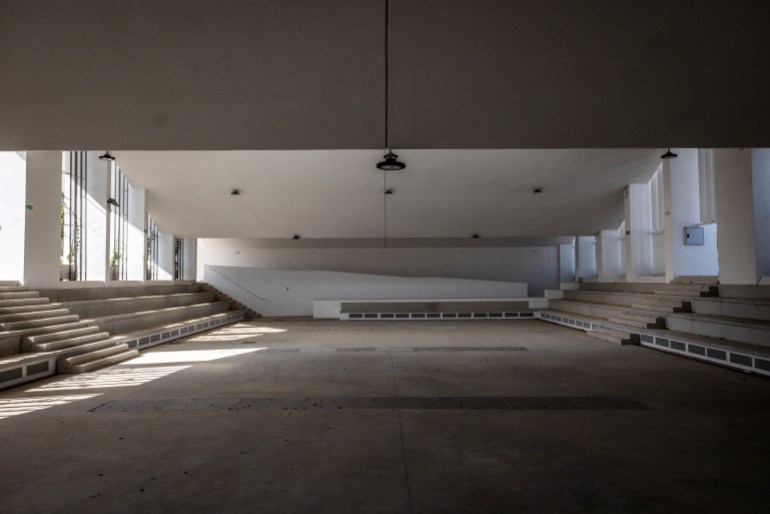
The undertaking, named CartujaQanat, is modelled after the Persian qanat system and seeks to chill the bottom temperature of an area the dimensions of two soccer fields by 6 to 7 levels Celcius inside La Isla de La Cartuja.
Partially funded by the European Union’s City Revolutionary Actions (UIA) workplace, this 5-million-euro ($5.1m) undertaking entails a channel 20 metres underground that may carry water – however the function is to not transport that water.
Vertical vents alongside the canal drive the coolness of the water upwards, permitting it to cut back the bottom temperature. “The important thing to the local weather management methods is the day-night cycle,” says Ramos.
Through the nighttime, the water underground – about 140 cubic metres [36,984 cubic gallons] – cools off with the naturally low temperatures. A few of the water is pumped up and despatched to the roof of the amphitheatre, which is roofed in photo voltaic panels. Nozzles fan out the water on high of the panels, creating what’s referred to as a “falling movie”. This mechanism helps expedite the cooling course of by lowering the depth of the water and permitting it to chill sooner within the low outside temperatures.
Through the day, solar-powered pumps push cooled water above floor the place it will get funnelled by way of small pipes and pushed in entrance of followers that spray the cool air into the bottom flooring of the amphitheatre. Exterior, a separate set of nozzles in small swimming pools of water spray mist into the air, cooling by evaporation.
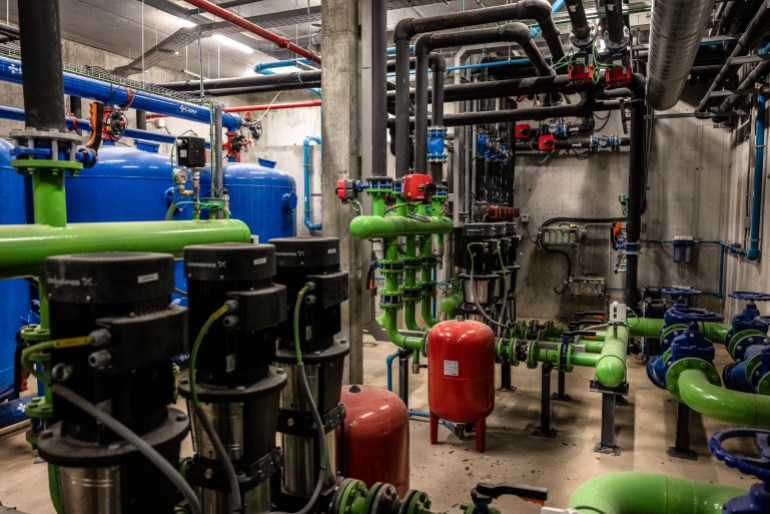
Different components assist to maintain the temperatures down: Vegetation planted on the within partitions cools by way of transpiration (extra water from leaves evaporates into the air), bushes present shade exterior, and the roof is painted a heat-reflecting white.
The creators are hoping the area will develop into a communal level for college college students and individuals who work at close by firms. “The undertaking goals to convey life again on the road,” says Ramos. “This may present climatic refuge whereas permitting each shelter in the course of the summer season and the potential for persevering with to organise outside actions within the sizzling months.”
Alvarez says that the world needs to be accomplished by June, simply in time for the summer season when Spain experiences its highest temperatures.
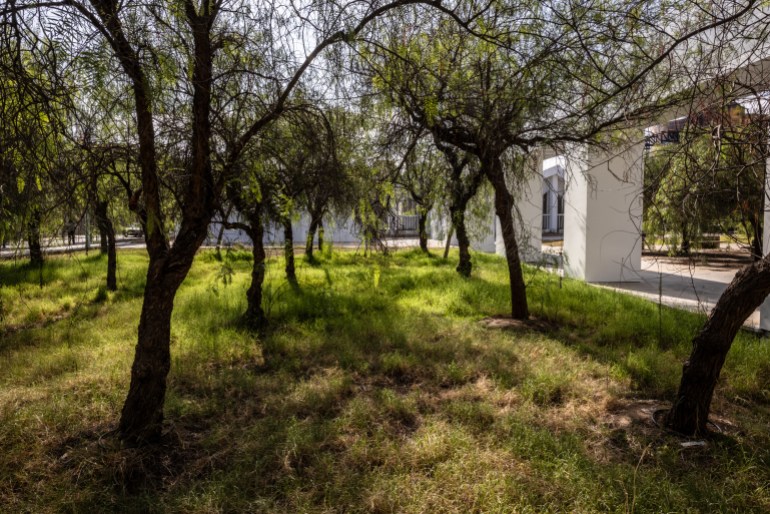
A cool future
Ramos and Alvarez met greater than 30 years in the past when Ramos was considered one of Alvarez’s college students on the College of Seville. “He requested good questions,” says Alvarez. “The people who pose attention-grabbing issues to me within the classroom are the individuals who I attempt to recruit for the longer term.”
Since then they’ve been working collectively to chill down Seville. Within the Nineteen Nineties, they developed wind tunnels alongside Seville’s avenues, taking inspiration from a Persian wind catcher referred to as a bagdir, a tower with openings on the high that catch the wind and channel it downwards.
Alvarez says that they usually look to different international locations for options, particularly these which were coping with intense warmth for hundreds of years.
For instance, trendy Moroccan buildings are being designed to incorporate giant north-facing home windows and smaller south-facing home windows that herald pure gentle whereas maximising cooling. Los Angeles in the US, and Ahmedabad in India, are utilizing a brand new sort of white paint to mirror as much as 98.1 p.c of daylight and take up UV gentle, which helps to fight city warmth and scale back power consumption. White reflective paint has been used for hundreds of years in Morocco and Greece, incomes one well-known metropolis the identify “Casablanca” (white home).
“[The Arab world] did it as a result of they wanted to … both you progress otherwise you die otherwise you discover one thing to chill your buildings. They usually discovered one thing,” says Alvarez. “[CartujaQanat] is mostly a tribute to them,” he provides.
The workforce has already began making use of a few of their learnings to different elements of Seville.
“Bioclimatic” bus stops, which use a smaller-scale model of the CartujaQanat method, are being put in in time for summer season. Contained in the shelter, air that has been cooled by a closed water system is pumped out by way of tiny holes, powered by photo voltaic panels on the roof – much like a fridge,” Sanchez instructed native newspaper Sur final summer season. He and Khaneiki say that they hope to have extra citizen participation because the undertaking strikes ahead
The efforts in Seville are a modern-day reimagining of the programs constructed 1000’s of years in the past, Khaneiki says. “These are qanats constructed for contemporary folks by trendy folks. It is a resurrection of qanats within the new period.”






















+ There are no comments
Add yours